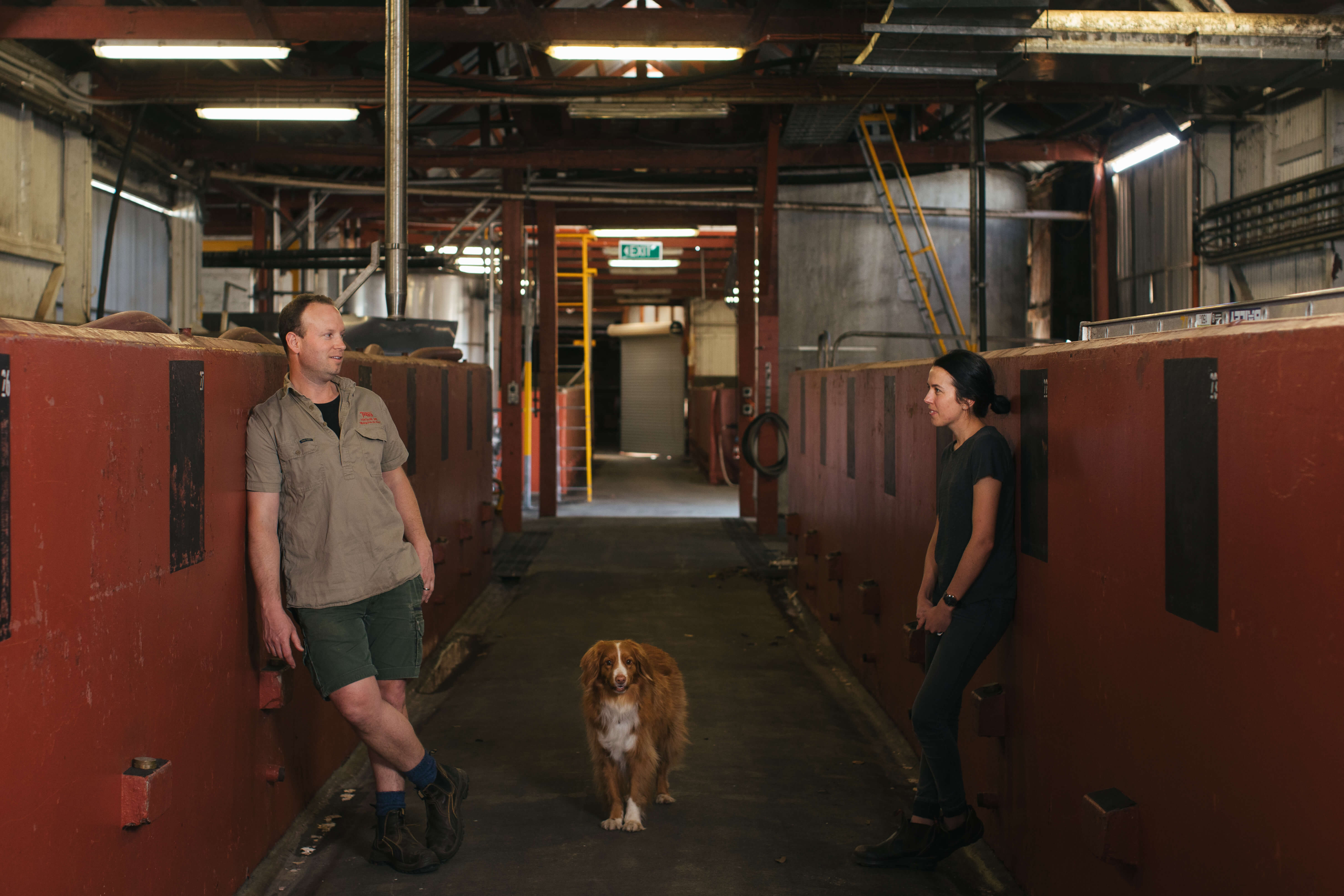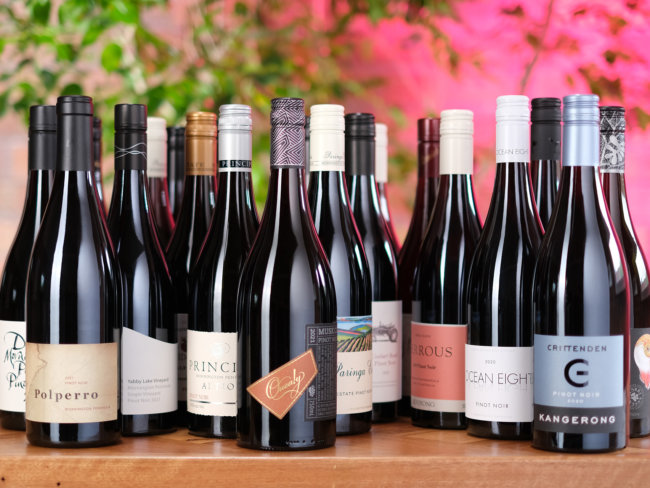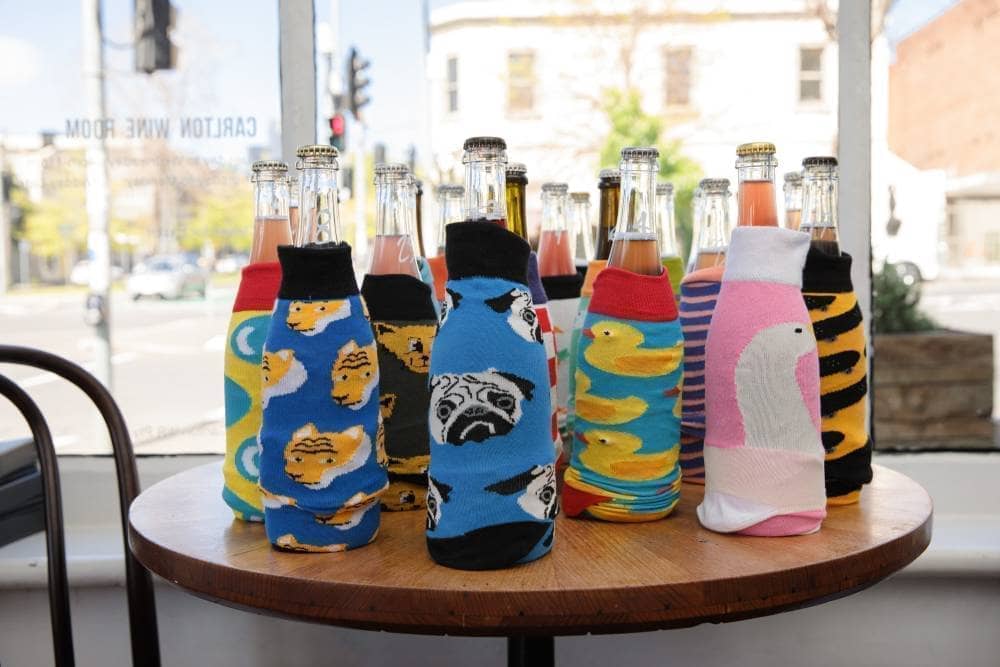McLaren Vale is one of Australia’s oldest wine regions, and it’s a classic region, with stalwart varieties leading the way. A real traditional rock. Or is it? McLaren Vale has traditions, sure. But while there may be plenty of mature to ancient vines, historic stacked-stone wineries and old stories worn smooth in the retelling, it’s a long way from being stuck in the past. And the three Vale producers who made the 2020 Young Gun Top 50 – Bondar, Paralian and Somos – illustrate that fact in dynamic fashion.
McLaren Vale has quietly reinvented itself like few other wine regions. And that’s not to say that it’s turned its back on the past, grubbed out history and spun out a new story. Rather, the region has largely adapted its viticulture and is future-proofing by planting complementary varieties for a warming region, a warming planet. But the strengths of the Vale are still there, and some are stronger than ever, such as the renewed focus on producing grenache of the highest pedigree – Rob Mack’s Young Gun crown two years ago attests to that – nuanced by winemaking, subregion and site.
Charlie Seppelt and Skye Salter started their Paralian label after a combined tally of 46 vintages around Australia, Europe and North America, settling in their home territory to make wines their way, unbound by the commercial realities of the wineries they have worked for – they’re keeping their day jobs, for now.
![]()
Charlie Seppelt and Skye Salter have started Paralian as a side business to their day jobs.
For Seppelt and Salter it wasn’t about reinventing or trying to make a bold statement, it was about starting with sourcing grenache and shiraz from exceptional vineyards, getting the picking dates right to preserve bright fruit and to make the wines simply. Their approach was to throw the commercial playbook out the window and go back to the basics, making wines of impeccable harmony, sense of place and with the sure confidence of experience.
The Paralian wines are echoes of an earlier time, made in 130-year-old concrete fermenters and pitched towards the style of Vale wines from the mid-20th century, while Bondar make similar nods to tradition, but the wines are flushed with a spirit of advancement.
In 2013, Andre Bondar and his wife, Selina Kelly, bought the vaunted Rayner Vineyard, perched in the hills on the edge of both the Blewitt Springs and Seaview subregions, on Pirramimma sandstone geology. It’s a famous site, and one that has provided fruit to fill many a famous bottle of wine. It was a matter of right time right place for the pair, and now that piece of history is being reframed under their Bondar label.
Bondar makes a very modern set of wines that stress fragrance, poise, subtle complexity and mid-weight drinkability, but there’s a strong link to the past in the wines, too. While the reds are significantly fresher than styles of old, Bondar is not pushing hard in any particular direction, instead he cleverly builds structure, texture and detail – some whole berries, some whole bunches, some extended skin contact, and a mix of vessels, including ceramic eggs – producing wines that feel thoroughly familiar and strikingly new, too.
![]()
Andre Bondar and his wife, Selina Kelly, in their Rayner Vineyard.
McLaren Vale is no longer dependent on groundwater for irrigation, with recycled water taking the lead, and it is home to the largest concentration of organic and biodynamic growers of any region in the country, and some of those vineyards are significant in size. Varieties such as nero d’avola, fiano, montepulciano and vermentino are thriving in the Mediterranean climate, providing new inspiration for makers, such as Ben Caldwell and Mauricio Ruiz Cantù from Somos.
Caldwell and Ruiz Cantú paint their canvas with bold strokes. They started their first label while both still studying oenology at the University of Adelaide. That was Juguette, which is an export only brand that was pitched to suit the tastes and cuisine in Ruiz Cantú’s native Mexico. But it is with their locally focused Somos that the pair get to exercise their seemingly boundless creativity, with a distinctly lo-fi approach and a focus on less established varieties grown biodynamically or organically, where possible.
The pair source fruit from across the Vale with some forays into other South Australian regions. Their aim is to make wine as naturally as possible from sustainable sources, and to do so with an eye to approachability. Aglianico, carignan, cinsault, barbera, verdelho, vermentino and cabernet franc all come from the Vale, and mostly from biodynamic sources.
![]()
Mauricio Ruiz Cantù and Ben Caldwell sample a barrel of their Somos wine.
In the winery, Caldwell and Ruiz Cantú unbuckle winemaking conventions, employing lengthy periods of skin contact for some of the whites, early pressing for some reds, plenty of whole bunch and unusual field blends and co-ferments. But none of this is done to bend a variety to breaking point, rather to highlight the features in a different way, to shine a light into the corners. The Somos wines are like this, varietal and regional, but built with unconventional materials and often in unconventional ways.
Many wine drinkers would have an impression of what McLaren Vale is, of what the wines are like, but it’s a region that just resists being boxed in. It’s one of our oldest wine regions, but tradition doesn’t hamper innovation, rather inspires it, and there’s a spirit of change that is seeing it evolve in exciting new ways.
From paradigm shifting makers like Somos to the quiet revolutionaries like Bondar to the refined classic approach of Paralian, McLaren Vale is one of the most exciting prospects in Australian wine right now.
The wines
2019 Paralian Shiraz $42
Lifted notes of pristinely ripe forest berries, with an earthy, mature-vine growl vibrating throughout. There’s a spray of black, blue and ripe red fruits, with tarry, spicy and tea leaf accents, but it plays down a more or less mid-weight line, with a smoky and spicy edge, too. There’s some barely noticeable whole bunch to this, with a dusting of star anise, and tightening and freshening chew from natural tannin.
2018 Paralian Grenache Shiraz $36
Ripe black fruits, berries, spiced plums and a tarry, bitumen/mineral edge laced with warm spice. There’s a warm leathery lift with some dried Mediterranean herbs and notes of fennel seeds over a core of black fruits. This has a full flush of fruit with dark and tarry characters, but there is also a real drive of spice and freshness, with acid brightness and assertive tannins channelling through the palate.
2019 Somos McLaren Vale Biodynamically Farmed Vermentino $37
This has a very expressive nose of waxy red apples, citrus rind, pear and custard apple, with a brush of leafy greens and an almost mustard fruit hint. The palate opens with a broad textural gesture, seemingly gentle acidity and waves of slippery, lightly saline texture and gentle tug of skin tannins, finishing with preserved citrus peel notes, sea spray and a struck mineral note.
2019 Somos Cabernet Franc $32
Very aromatic wine with a leafy and cracked pepper lift, underneath lies a deeper reserve of cassis and ripe forest berries. There’s a smoky barbecue and hard herb note, with intense fruit emerging out of the fragrant, leafy covering. Some graphite and almost gravelly savoury notes. The palate is rich but in a slurpier way, rather than being heavy, coming in around mid-weight, with a slightly salted chocolate edge.
2019 Bondar ‘Higher Springs’ Grenache $38
This is pretty and lifted with sour raspberry, red currant and apple strap notes, macerated strawberries dusted with white pepper, and almost a sour snake vibe, but without it feeling confected in any way. There’s an earthy old-vine character, but not rugged and dark, it just feels like mature material, though with a vibrantly fresh make. This feels like it’s seen some bunch, though it’s not stalky, but there’s a grapey tannin play, a fur to the phenolics, a cranberry grip with a chalky edge and bright acidity that give this real freshness and moreish appeal.
2019 Bondar ‘Rayner Vineyard’ Grenache $38
Lifted dark and red fruits, with scents of wild raspberry and sour cherry plus a flush of amaro-like herbs, bitter chocolate, warm spices and a leathery old vine import. This is quite structured in a fine-grained tannin kind of way, and without a big whack of sweet fruit. There’s a really charming line of pure berry fruit that suggests sweet treats without being confected at all, and a web of ultra-fine chalky tannins. There’s plenty of charm in the flavours, but it’s the structure and carry of this that give it real pedigree.
See the full list of Top 50 winemakers in the 2020 Young Gun of Wine Awards here. Join in our virtual events here, and also vote on who wins the People’s Choice until June 1.









